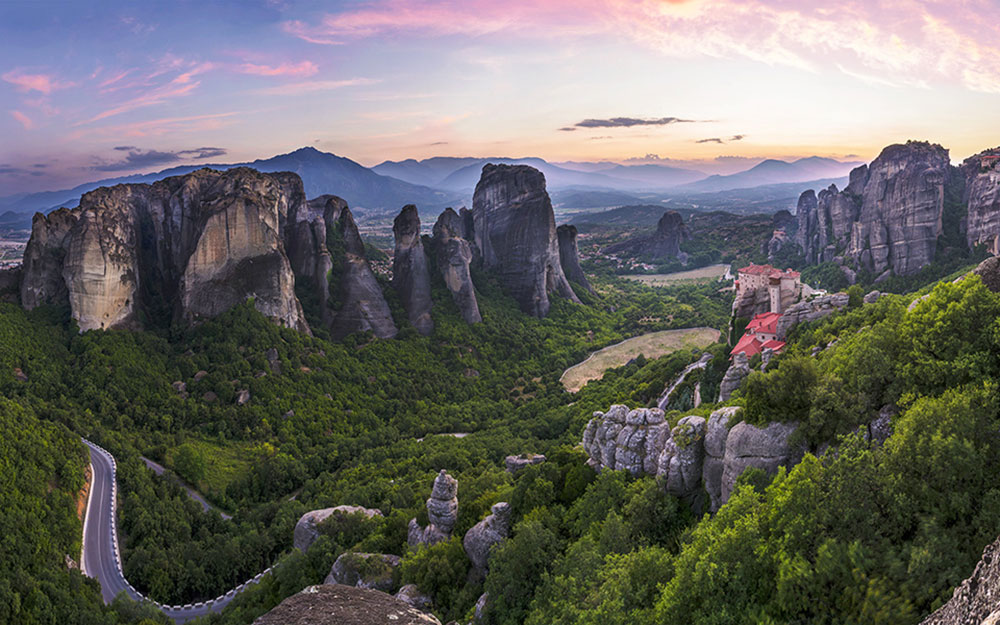From James Bond to ‘Game of Thrones,’ the impossible and incredible monasteries of Meteora.
In the climactic scene at the end of ” For Your Eyes Only,” Bond has to steal back the Automatic Targeting Attack Communicamcguffin from “St. Cyril’s.” The fictional St. Cyril’s is the real life Monastery of the Holy Trinity.
Today you can drive to most of the six main monasteries, and hike to the others. The road was built in the late ’70s, at a time when Meteora was unknown to most of the outside world. That would change in 1981, however, thanks to Britain’s most famous spy.
Few kilometers northwest of the town of Kalabaka, the impressive rocks of Meteora are rising from the plains of Thessaly been one of the most amazing places in Greece.
Many centuries ago, on these gigantic rocks with the breathtaking landscape reaching heights of more than 600 meters, it was formed one of the most important monastic communities of Greece. The word Meteora means literally ‘hovering in the air’ and of course brings to mind the word meteor.
During the Turkish occupation it was the monasteries which kept alive the Hellenic culture and traditions and were not only relgious centers but academic and artistic as well. It is believed that were it not for the monasteries, Hellenic culture would have disappeared and modern Greece would be a reflection of the Ottoman empire with little knowledge of its roots and history. The monasteries attracted not only the deeply religious, but the philosophers, poets, painters and the deep thinkers of Greece. Today only six of the monasteries are active.
There is a 2 euro fee to enter each of the monasteries and proper attire is required. Women must wear skirts below the knees though in some monasteries these are provided for women in shorts or slacks. Men’s arms must be covered and they must wear long pants. Monasteries are closed between one and three every day.
Holy Monastery of Great Meteoron

The Great Meteoron, also known as the Holy Monastery of the Metamorfossis (Transfiguration of Christ), is a male monastery and is the oldest and largest of all the monasteries of Meteora. It is built on the greatest rock of the complex, the Platys Lithos or Playtlithos. It was founded little before the mid-14th century (around 1340) by a scholar monk of Mount Athos, Saint Athanasios Meteorites.
One of the most interesting parts of the monastery is the sacristy which contain shelves of the skulls of the monks who have lived there over the years. Great Meteoron monastery serves as the main museum for visitors to Meteora.It remains a true bastion of orthodox monasticism, a real bulwark of Christianity and a holy ark of our national and religious tradition.
Holy Monastery of Varlaam
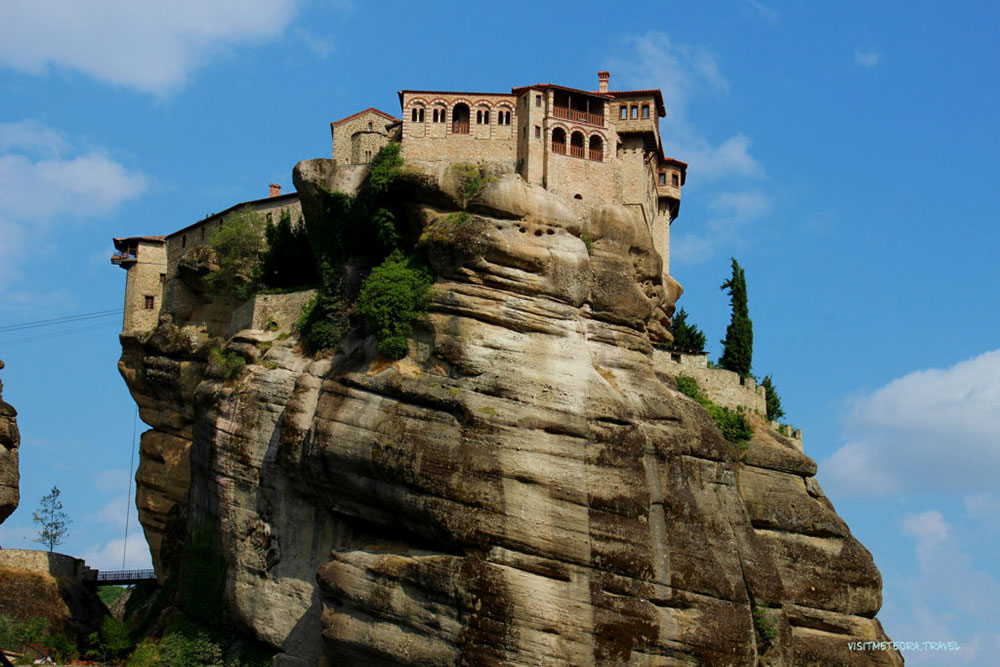
The Varlaam Monastery is named after the first monk who built the first church on the rock. This was in 1350 and Varlaan built three churches, a room for himself and a water tank. Unfortunately no other monks joined him, after his death the site was abandoned for 200 years. In 1517 two monks from Ioannina, Theophanes and Nektarios Apsarades , re-founded the monastery.
The visitor at the monastery after climbing the staircase meetings left the hospital, which was restored in recent years and is connected to the north side of the chapel of St. Anargyroi. Below right, the church and the tower of the winch. The monastery is a two-columned cruciform, Athonite type of church. The nave preceded spacious narthex, a four-column space with a dome. Northwest of the ledger is the Trapeza (dining room), which has been turned into a museum of relics of the monastery, the chapel of the Three Hierarchs, the hearth, the cells and the hostel. The chapel of the Three Hierarchs, which can be visited only with the permission of the monks, is a single-aisled wooden roofed church.
Holy Monastery of Rousanou
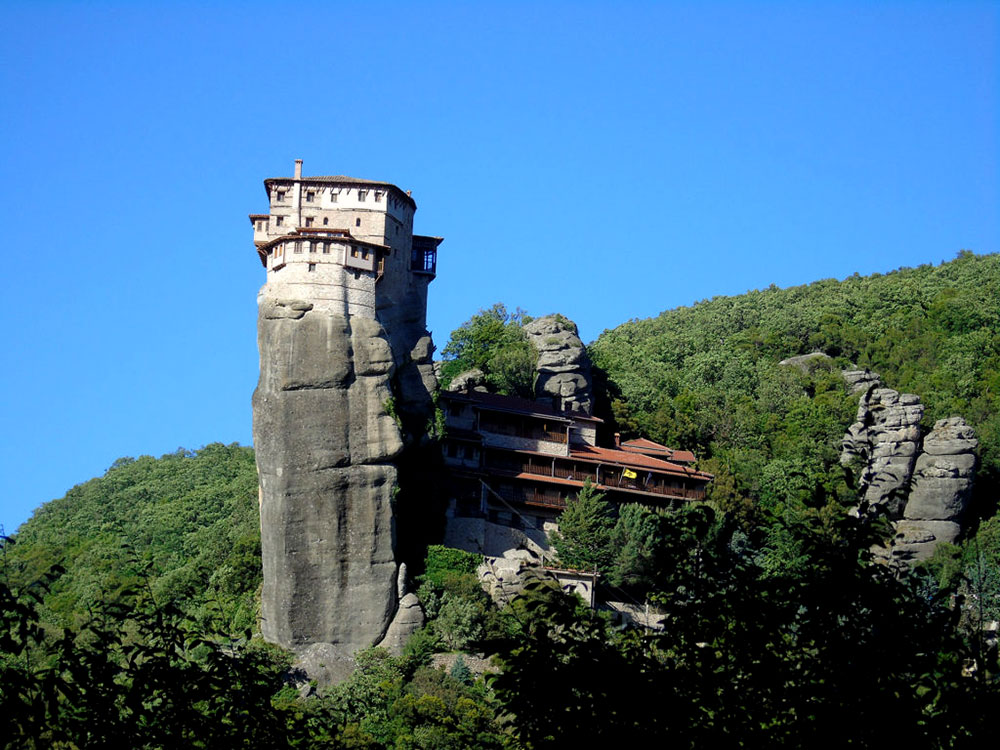
The Rousanou Monastery was built in 1545 by Maximos and Ioasaph of Ioannina, it is unclear who the actual monastery is named after, but it is dedicated to St.Barbara. Like other monasteries at Meteora the Roussanou monastery was looted during the Second World War. The monastery is reached by a bridge that has some dramatic drops.
The monastery is located on the way from Kastraki to Meteora between St. Nicholas Anapafsas and Varlaam monastery. The ascent to the monastery was originally a ladder while now done with the help of two solid bridges, which were built in 1930 and replaced the previous wooden bridge which was built in 1868. The building complex covers the entire plateau on the top of the cliff. The monastery consists of a three-story complex, with the Catholicon and cells on the ground floor and reception areas, other cells and auxiliary rooms in the other two floors. The katholikon that was built in 1545 is a cross-shaped, two-columned, Athos type temple with simple, an almost square space covered with slightly ellipsoidal dome. The paintings of the ledger was made in 1560 and they represent in terms of quality one of the most mature works of painting of the acme of “Cretan School”.
Holy Monastery of St. Nicholas Anapafsas

St. Nicholas Anapafsas monastery was founded in the 14th century and nobody is quite sure who the monastery is named after. This Monastery is most famous for its frescoes by the famous Cretan artist Theophanes Strelitzas in 1527. Some of these frescoes include the passion of Christ and the Virgin Mary praying. The monastery fell into disrepair and was completely abandoned for 60 years from 1900 to the 1960’s when the Greek government repaired the monastery.
In the upper zone depicted the Assumption of St. Nicholas and scenes from the miracles of Christ. In the main temple at the top of the dome dominates the Almighty, below illustrates the liturgy and the Prophets and the spherical triangles depicts the four Evangelists. On the walls of the nave are depicted in the lower zone full length saints, little higher saints in stitharia and in the upper zone of the Twelve scenes from the life, passions and Resurrection of Christ. Given the large number of scenes that make up the iconography of the Catholic, whose surfaces murals were limited, many of these scenes are the size of a handheld image.
Holy Monastery of St. Stephen

The 14th century St. Stephen monastery is the closest monastery in Meteora to the main town of Kalabaka, and so the easiest to visit. St. Stephen monastery was founded by St. Antoninus Cantacuzene, who is thought to be a son of the Serb ruler Nicephorus II of Epirus, in 1400. The Katholikon at the monastery is dedicated to St. Charalambos who’s head it contains, as it is believed to prevent illnesses. Much of the monastery was destroyed during World War Two and the Greek civil war that followed.
In the northwestern part is the new church, which was built in 1798 and belongs to the type of triconch cruciform church with a spacious plain on the west side and a portico along the northern side of the temple. The surfaces of the walls of the new Catholic who until the 1980s were unadorned now are adorned with works of the famous painter of our time Tsotsonis.
Holy Monastery of Holy Trinity
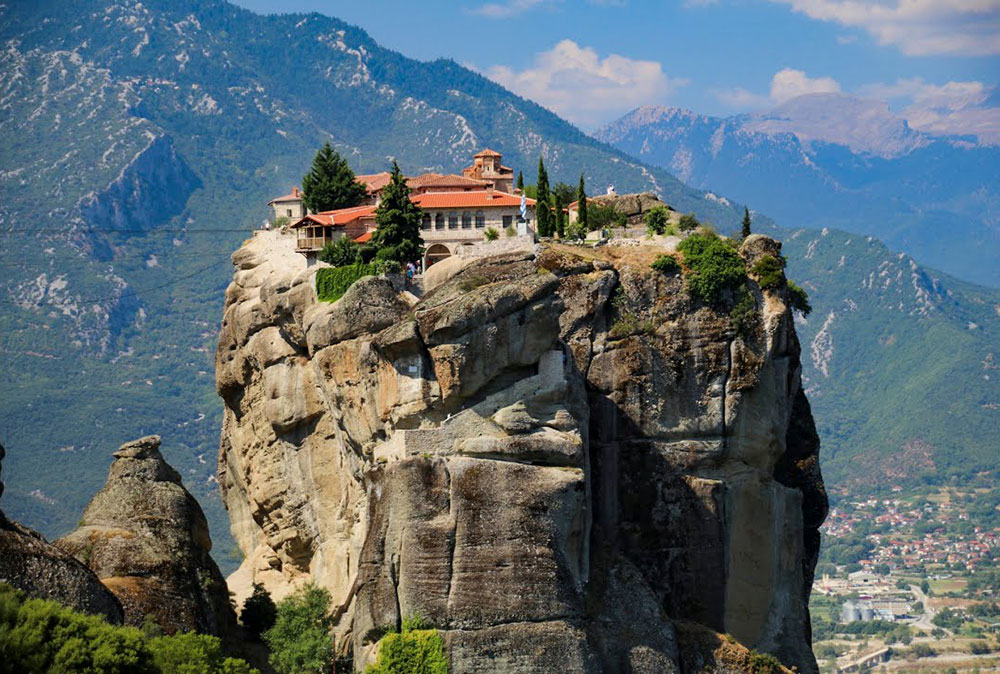
You may recognise the monastery of Holy Trinity as it was used in the James Bond movie ‘For your eyes only’ Roger Moore scales the cliff face. Out of all the monasteries of Meteora Holy Trinity has the most dramatic location, the rock face is a sheer drop and the rock itself is a lot more slender. The monastery was built in 1458 and had many treasures, but most of these were looted by the Germans during the Second World War.
In 1684 a small sacristy was added to the southeast corner of the church which is connected with the temple. The monastery owned 124 manuscripts (kept since 1953 in the Monastery of St. Stephen) including codes of the monasteries of Anapafsas and Rousanou.
Visitors to reach the monastery must cross a pedestrian path downhill until the foot of the cliff and then climb 145 carved steps. Left of the entrance to the monastery is the chapel of St. John the Baptist, a small rotunda is carved into the rock. At the end of the hallway (right) is the catholicon of the monastery. It is a small two-columned cruciform church with a dome and a spacious plain on the west side.
Kalambaka Town

Kalambaka (also spelled Kalabaka or Kalampaka) is a town of 12,000 citizens and is situated on the foot of the most extraordinary Meteora rocks. It is at times underestimated as merely sharing the glory of the Meteora pinnacles that spectacularly rise at the near background. However, it is a town with a very rich and long history in itself.
Kastraki Village
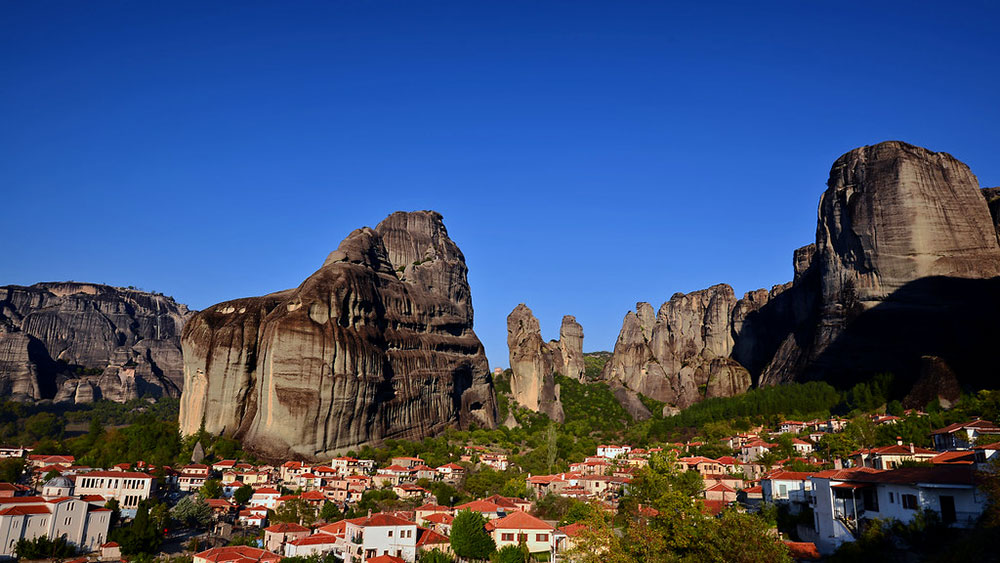
Kastraki is indeed a most picturesque place with an authentic, local character. Feeling closer to the local lifestyle in the Greek province, enjoying the proximity to nature and finding peace of mind are some of the major assets of this place that urge visitors to book accommodation in this traditional, beautiful village.
Beyond the religious quarters, Meteora offers more than picturesque scenery and an education in ancient history. It’s developed a reputation as Greece’s adventure capital. While most visitors opt for the popular driving and hiking excursions, always with a focus on visiting the monasteries, more active tourists look for alternative ways to reach for the heavens. Those dramatic sandstone peaks have helped make Meteora a thriving hub for rock climbers from around the world. The routes vary between bolted and traditional, and are suitable for absolute beginners through to professional climbers.
Share this:
- Click to share on Facebook (Opens in new window)
- Click to share on Twitter (Opens in new window)
- Click to print (Opens in new window)
- Click to share on LinkedIn (Opens in new window)
- Click to share on Reddit (Opens in new window)
- Click to share on Tumblr (Opens in new window)
- Click to share on Pinterest (Opens in new window)
- Click to share on Pocket (Opens in new window)
- Click to share on Telegram (Opens in new window)
- Click to share on WhatsApp (Opens in new window)

